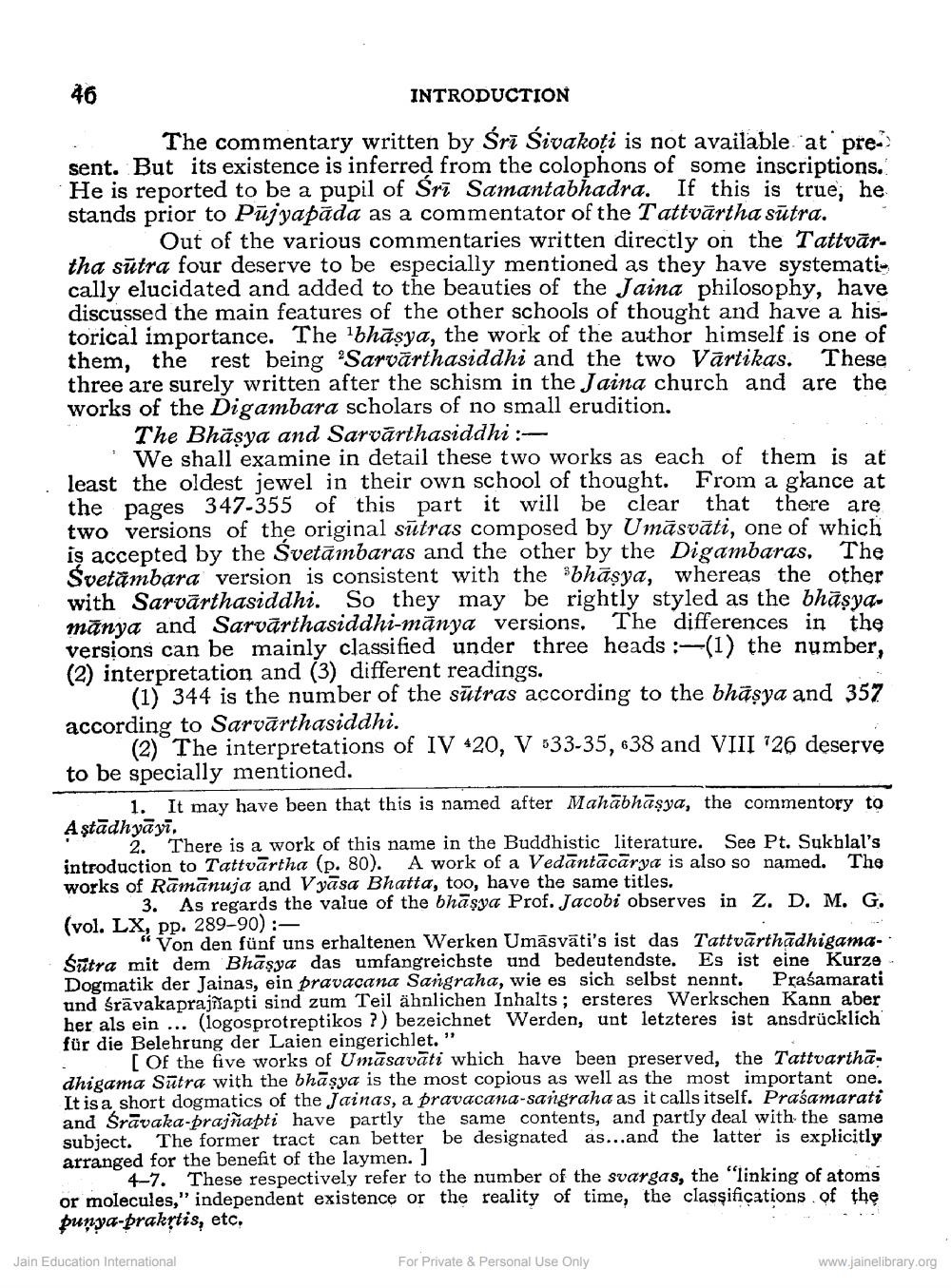________________
46
INTRODUCTION
The commentary written by Sri Sivakoti is not available at present. But its existence is inferred from the colophons of some inscriptions. He is reported to be a pupil of Sri Samantabhadra. If this is true, he stands prior to Pujyapada as a commentator of the Tattvartha sutra.
Out of the various commentaries written directly on the Tattvar tha sutra four deserve to be especially mentioned as they have systemati cally elucidated and added to the beauties of the Jaina philosophy, have discussed the main features of the other schools of thought and have a historical importance. The 'bhäşya, the work of the author himself is one of them, the rest being 'Sarvarthasiddhi and the two Vārtikas. These three are surely written after the schism in the Jaina church and are the works of the Digambara scholars of no small erudition.
The Bhasya and Sarvarthasiddhi :
We shall examine in detail these two works as each of them is at least the oldest jewel in their own school of thought. From a glance at the pages 347-355 of this part it will be clear that there are two versions of the original sutras composed by Umäsväti, one of which is accepted by the Svetambaras and the other by the Digambaras. The Svetambara version is consistent with the 'bhasya, whereas the other. with Sarvarthasiddhi. So they may be rightly styled as the bhāṣyamanya and Sarvarthasiddhi-manya versions. The differences in the versions can be mainly classified under three heads (1) the number, (2) interpretation and (3) different readings.
(1) 344 is the number of the sutras according to the bhasya and 357 according to Sarvarthasiddhi.
(2) The interpretations of IV 20, V $33-35, 38 and VIII '26 deserve to be specially mentioned.
1. It may have been that this is named after Mahabhasya, the commentory to Astādhyay, 2. There is a work of this name in the Buddhistic literature. See Pt. Sukhlal's introduction to Tattvartha (p. 80). A work of a Vedantacarya is also so named. The works of Ramanuja and Vyasa Bhatta, too, have the same titles.
3. As regards the value of the bhagya Prof. Jacobi observes in Z. D. M. G. (vol. LX, pp. 289-90):
Von den fünf uns erhaltenen Werken Umāsväti's ist das Tattvarthadhigama-· Sutra mit dem Bhasya das umfangreichste und bedeutendste. Es ist eine Kurze Dogmatik der Jainas, ein pravacana Sangraha, wie es sich selbst nennt. Prasamarati und śravakaprajñapti sind zum Teil ähnlichen Inhalts; ersteres Werkschen Kann aber her als ein... (logosprotreptikos ?) bezeichnet Werden, unt letzteres ist ansdrücklich für die Belehrung der Laien eingerichlet."
[Of the five works of Umasavati which have been preserved, the Tattvarthadhigama Sutra with the bhagya is the most copious as well as the most important one. It is a short dogmatics of the Jainas, a pravacana-sangraha as it calls itself. Prasamarati and Sravaka-prajñapti have partly the same contents, and partly deal with the same subject. The former tract can better be designated as...and the latter is explicitly arranged for the benefit of the laymen. ]
4-7. These respectively refer to the number of the svargas, the "linking of atoms or molecules," independent existence or the reality of time, the classifications of the punya-praktis, etc.
Jain Education International
For Private & Personal Use Only
www.jainelibrary.org




